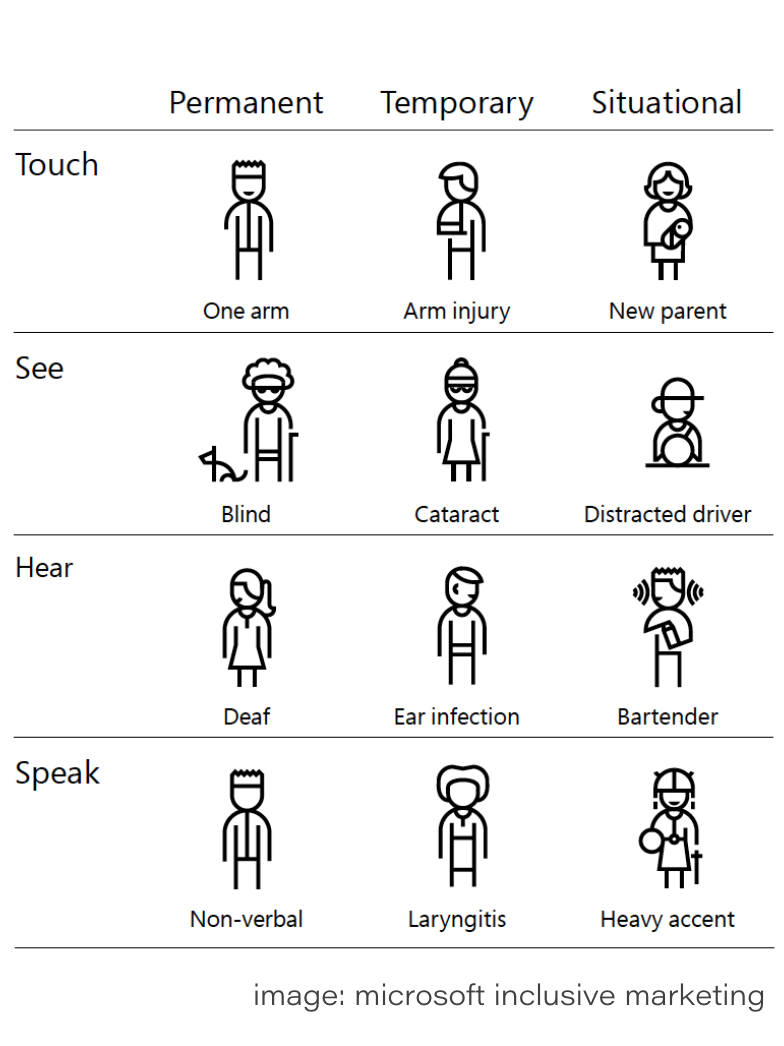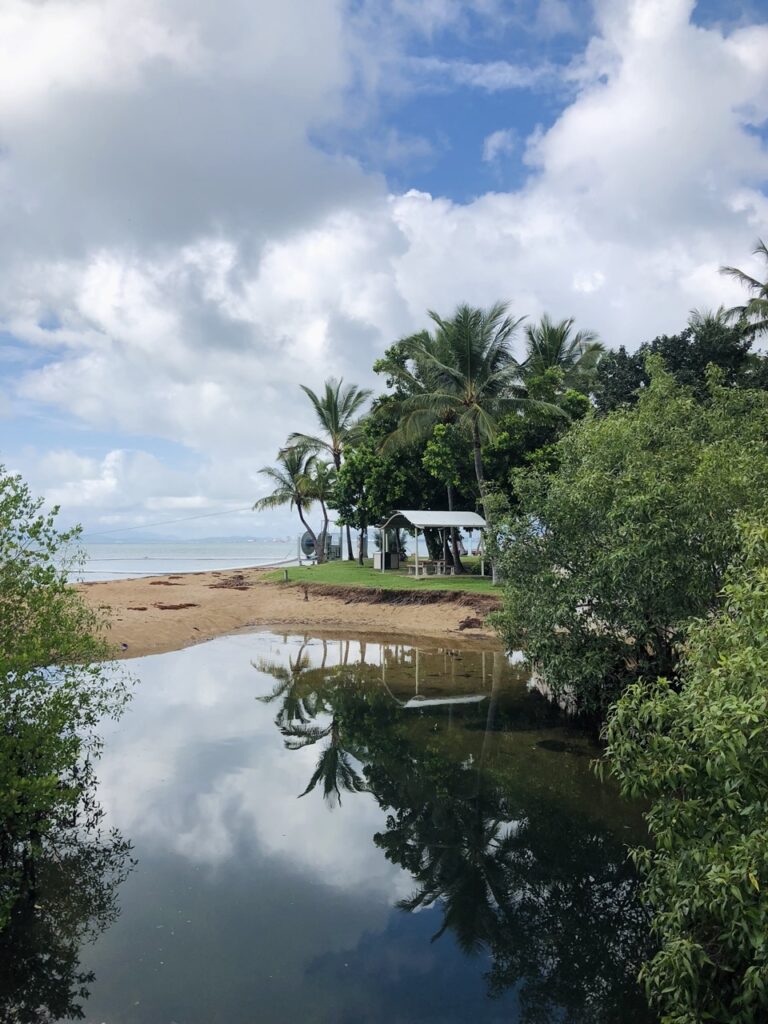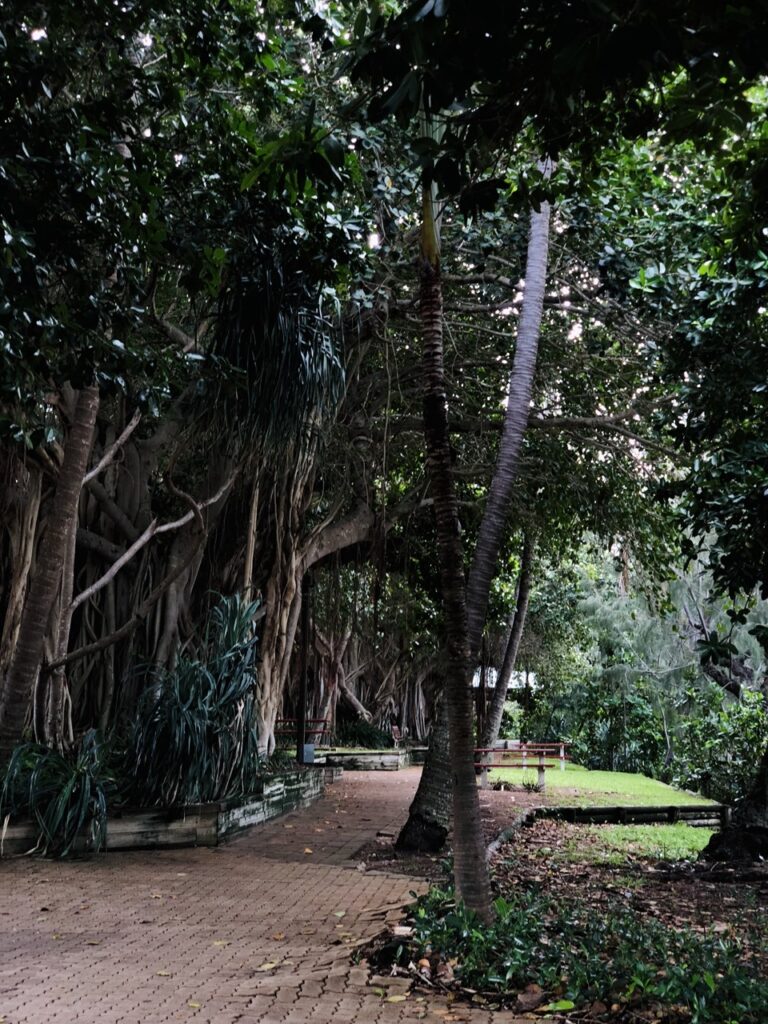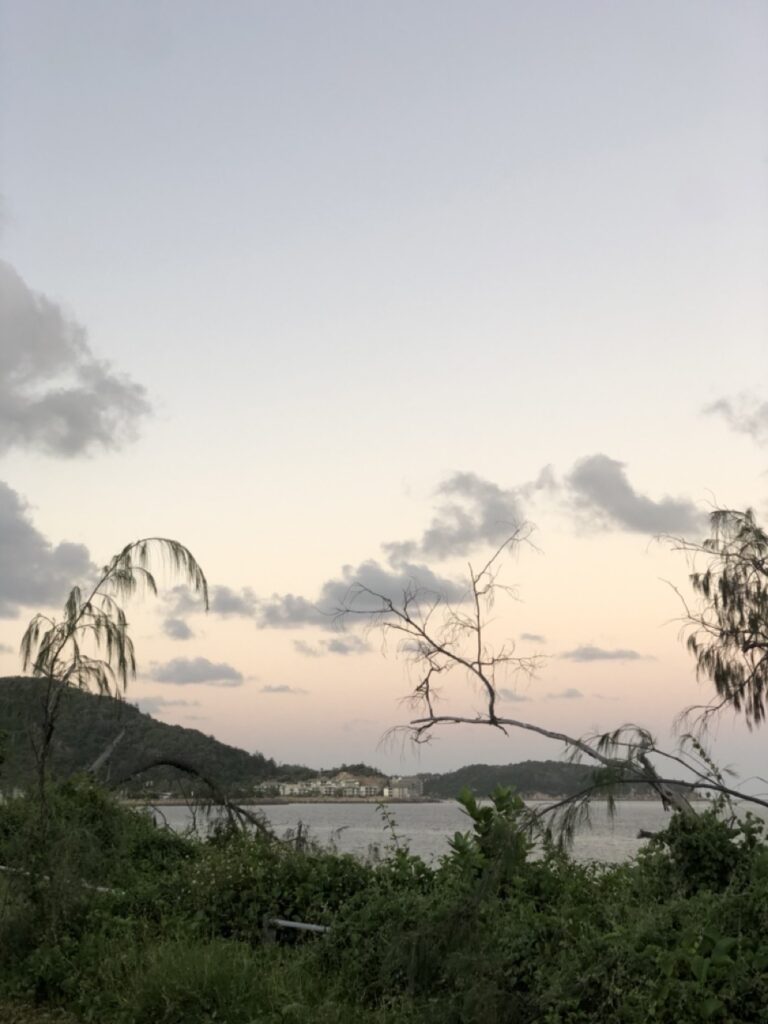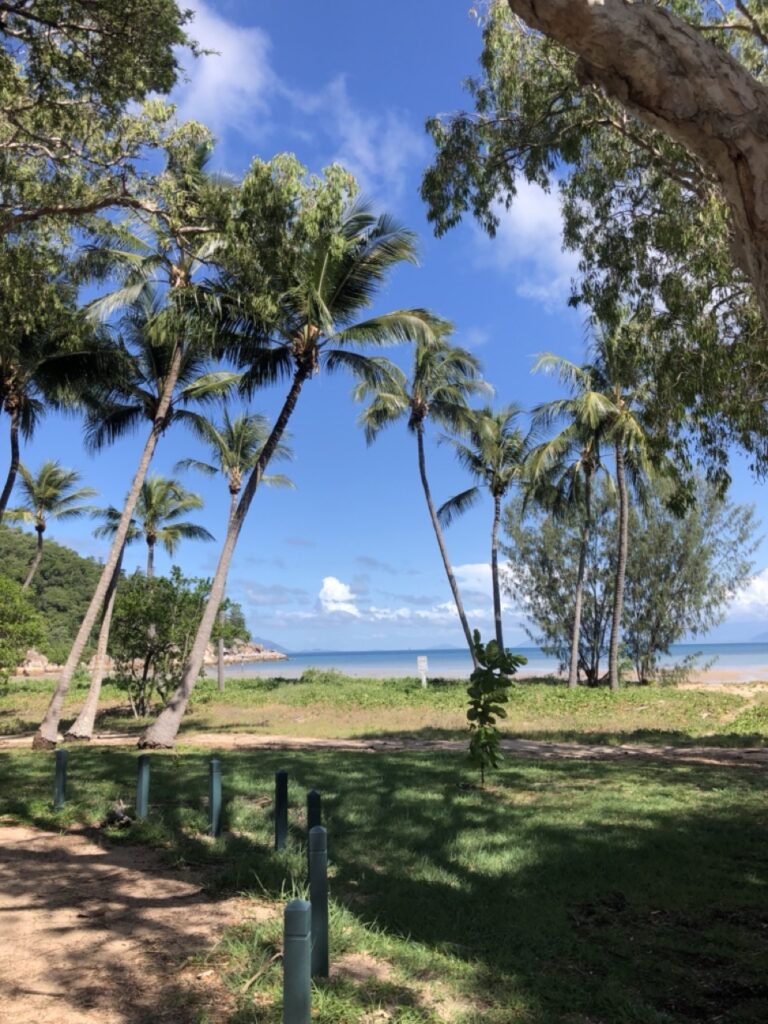Description: This week we are diving into web accessibility! What it is, why it matters and who it effects. Get your notepad ready, because Kerri has some great tips on how every brand leader can cultivate better accessibility practices online. We’d love to know your thoughts on this topic and where you’re at on the journey, just head to our podcast page to send us a voice message!
SHOWNOTES
CONNECT WITH F&F
Subscribe to our podcast
Email us at hello@kerriflourishcreative.co
Leave us a voice message
Follow us on IG and tag us when you listen!
Listen + Leave a Review >>
TRANSCRIPT
INTRO
Kerri: Hello and welcome to the Flourish and Friends podcast. I’m your host, Kerri, and I’m here with my friend and collaborator. Hi Esther.
Esther: Hey, Kerri. Hey friends.
Kerri: Our goal for this podcast is to create an avenue for our Flourish community to gather around important conversations that lead to more growth and more flourishing.
Esther: Yeah, nothing is really off the table because how we lead our life spills into how we lead at work, and overall, our brand reflects that, especially as creatives.
Kerri: Today we’re talking about all things web accessibility, why it matters, what it is, and some simple tips for creating accessible web content. But first, let’s start with some fun things that are giving us life.
FRESH PICKS
Kerri: All right, Esther, what’s your fresh pick for this week?
Esther: Well, it’s kind of a big one. I just got back from a holiday in magnetic island, so my fresh pick this week is just living in Australia. I have such a great opportunity to travel, especially as you know, a foreigner moving to a new country. I think you’re much more likely to travel where you’re living at, than if you’ve lived here your whole life.
So, we took the opportunity because Cody’s mom is visiting from the States for three weeks and we booked a trip up to Magnetic Island. It’s in Queensland, so if you know where. Cairnes is, it’s a bit farther south because Cairnes is pretty far north. That’s probably one of the more tropical places to go to in Australia.
But Magnetic Island was beautiful. It’s just everything you want in an Island paradise trip. I was able to snag a really cool Airbnb that put us within walking distance from one of the beaches and yeah, we just relaxed for several days, saw so much wildlife.
It’s technically part of the Great Barrier Reef National Park, so it’s protected land. And because of that, koalas actually still live on the island, so we got to go on a hike. Yeah, there’s this famous fort hike. So there used to be an Australian I think army fort that looked out into the sea.
And so they’ve got ruins up high in the hills. And on those hikes you can see sleeping koalas. It’s so cute.
Kerri: You saw sleeping koalas?. That is so cool.
Esther: Was a bucket list. Yeah. They were just hanging out.
Kerri: Oh my gosh. What a dream.
Esther: And we got to. We got to feed some rock wallabies, which if you don’t know, rock wallabies are like miniature kangaroos. They’re like maybe one foot, one or two feet tall. And we saw one with a joey in his pouch. It was really cute. And then the birds were just yapping all, all week.
We saw lots of like black cockatoos and geckos and yeah, it was fun. Really fun.
Kerri: All animal words that never come up in the Midwest. I’m so happy for you that you got this island getaway, vacation time, relaxing time. If you could sum it up in three words, what would be your top three words?
Esther: Hmm, that’s hard. I would say relaxing, breathtaking…and exciting, I guess. Exciting because we got to see all the animals, but yeah, just island life, you know?
Kerri: Amazing. I hope maybe we can see some pictures of maybe one of the things, you don’t have to share all of ’em, but it would be so like I’m envisioning it in my mind, but I know I am coming nowhere close to what it, what it actually was. So I’d love to see photo or two.
Esther: Yeah, I’ll put some in the show notes for sure.
Kerri: I’m sure it was paradise.
Esther: It was absolutely.
Kerri: What are the beaches like in Australia? Are they like, are they soft? Are they rocky? What’s the vibe of a beach?
Esther: A little bit of both. So if you’re in the bay, you’re gonna get more soft beaches. There’s a lot of surf beaches around the southern coast and even, you know, the east coast where Sydney is and stuff. In Melbourne, we are situated in a bay, so it’s very calm water most of the time. And there’s some that are.
Pretty big grains of sand and then some beaches are just completely soft, so you get everything. And then on the island they said it was formed from a volcano. And so there’s like huge, granite boulders everywhere. So you’ve got pretty big grains of sand. But then you also have like some of the coast is boulders.
It’s on my bucket list to go to the Great Ocean Road. I am sure that’s completely different. But yeah. Australia as a continent is just really diverse, similar to America in that way. That depends on what region you’re in. Yeah, it is.
Kerri: Yeah. Thanks for describing that..
Esther: Yeah. How about you, Kerri? What’s your fresh pick this week?
Kerri: Well, it’s not as adventurous or exotic or cool as yours. Which is, which is totally good because it’s just something that’s been bringing me life.
Esther: It’s a spectrum. It’s a spectrum.
Kerri: Yes, it is a spectrum, and this week I’m bringing a very practical, fresh pick, the brand, Coco Kind, who I already talked about in a previous episode, but in the transition from winter to spring. Just been feeling very dry lately. I this kind, well, two things really. A raspberry vinegar toner from cocoa kind. You just shake it
after you cleanse your skin and spray it. Just spritz it all over. And then the second thing I spritz is called a glow essence. Spray. I’m pretty sure that’s the name.
And I just like the name of it, glow Essence. It’s like, yes, I need more glow essence in my life. So then I spray it on after that and I just kind of like patted, patted in gently and just let it soak in. I try to give my myself, my skin enough time to like soak all the things in. And that’s part of the, guess quote unquote self-care routine is not moving through the steps too quickly so your pores can actually get all the benefits. So yeah,
Esther: What does it smell like?
Kerri: Well, this raspberry vinegar one does kind of smell like raspberry. glow essence doesn’t really smell like very much at all.
Esther: Okay.
Kerri: a neutral smell, I guess. So, Yeah, it’s just, it’s fun and yeah, cocoa kind has been just, I’m very brand loyal to them and if you’re looking for any little up upgrade in your skincare routine, they’re pretty inexpensive, especially compared to a lot of other skincare brands. Or as like a little gift. If you wanna get a friend, a little self-care gift into Spring, it’s a really good option.
Esther: I haven’t ever used a ton of spray. Is it just like adding oil back into your skin or.
Kerri: It is. This says post cleansing solution for balanced and even skin. So you couldn’t use it kind of two different ways. Sometimes I actually spray it into a cotton round if I’ve had makeup on, I, I’ll use it to make sure, like I double cleanse and then I make sure everything’s off so it can help with that. Or I’ll just it and then pat it in. So, yeah. But I think it’s, it’s just supposed to like help balance your skin back out, get get it ready for more moisture. So, I
Esther: Oh, okay. Nice.
Kerri: I don’t know the science behind it, but, and it might, it might just be doing nothing, but I enjoy it..haha.
Esther: No, I’m sure it’s doing something.
MAIN CONVERSATION
Esther: So Kerri, I know for Flourish we’ve been doing a lot of work with clients lately on accessibility. I know this is really important to you and your client work. You kind of embed it into most of your practices, so I’d love to take a few minutes to just dive into why it matters. Why does web accessibility matter and who does it actually affect?
Kerri: I think I would just start by saying that, backing up with what your trying to do with a brand or What we’re trying to do as communicators or leaders is really connect and build trust with the, with people, you know? Building relationships, connecting, communicating, creating trust is what we’re doing.
We’re not just trying to like throw something out there and like, we’re trying to build a relationship. All of that to say if we’re trying to reach people and create trust, it’s important to keep in mind that up to one fourth of the adults in the United States identify as having some sort of disability. And there are a lot of different kinds of abilities, a lot of different abilities that exist, some that effect accessing the web and are also some that are situational.
So I, I’ll, I’ll include this in the show notes, but I really like this chart from Microsoft Inclusive Marketing, but they have, a chart of different abilities from permanent, temporary to situational. So, for example, if you’re thinking about the sense of touch, you could have someone who only has one arm permanently or temporarily they have an arm injury or situationally, maybe they’re a new parent and they’re holding a baby in one of their arms.
So all different abilities, all different reasons. But the important thing is web accessibility is really encompassing all of the disabilities that affect access to the web.
Esther: Okay,
Kerri: And those abilities can be anything from auditory, cognitive, different abilities, neurological, physical, speech, and visual. We often think of visual first, and it’s a really important component, but there are a lot of different layers in it as well.
Another reason why accessibility is so important is, and this shouldn’t be the main driving factor, but it’s definitely an important consideration, is that US Justice Department is really focused on accessibility and incorporating the American Disabilities Act.
So if you think about entering a public space or a building, they need to comply with American Disabilities Act. So, anyone who wants to enter can enter, get to where they need, get what they need.
You have to think about that in a digital space too. Like your website is your digital home. So making sure people can again, enter or land access what they need, get to what they need, then move on in a very seamless way so you can think about it from that perspective as well.
Esther: So what does accessible content. Practically what I’m sure we’ve interacted with it or seen it. What does it look like? What are some ways it shows up on the web?
Kerri: So some of it is seen, some of it also isn’t seen. Some of it is in the code and in the backend too. I think, the simplest ways to think about I, I have this acronym that I use, which is AMCMA. There’s no great ring to it, but I kind of think it, think of it through the lens of art, messaging, context, medium and authenticity.
If you’re thinking about art wanting to be more accessible to different people, what I would basically consider good design is accessible design. So good design being there’s color, clear color contrast, which means able to actually read or view. What is being put displayed on a screen.
So this impacts, visibility and readability. And if you’ve ever seen like red on top of black, it just hurts your eyeballs and you can’t read it. So simple things like that. that’s accessibility.
For visuals also there’s, if you think on the backend, so that’s something that’s visual on the back end It’s something like using an alt tag. which there are a lot, there’s been a lot of conversation around people are becoming more and more aware of utilizing alt tags. Alt tags are essentially, Written copy appears in place of an image on a webpage. So this is helpful for someone who’s not viewing a website, they’re listening to a website or navigating a website differently.
They’ll be able to understand not only what the picture is about, but kind of the intent and purpose of the picture. So that’s on the back end, but you won’t necessarily see it load on the front end. But it is a very important part of accessibility.
Esther: Mm-hmm. . And then what are the other ones you said? A M C M A. So what would it look like on a coding side of the website?
Kerri: Well, I think just zooming back out on the importance of accessibility and thinking through. Some of the different people who are accessing your website, they’re using different tools to access your website, like a screen reader. Most of us or a, a good chunk of people access a website using a keyboard and a mouse. We have to remember that not everyone uses that, or not everyone uses a mouse. They use different tools to get around and access the internet.
So something that people often, you’re thinking about accessibility, you’ll often see a plugin like overlay that’s on a website and it’ll have a little like wheelchair on it, and then you click the wheelchair and it is, out and it provides all these different settings of like, make the text bigger, make the, you know, increase the contrast, make it black and white instead of color. And while it seems like, oh, this is awesome, this website is including accessibility. It’s actually not the best solution. It’s definitely a band-aid solution, especially for people who are using different tools, accessing websites. They don’t wanna have to go in and figure out how to use this plugin in order to get what they need from the website.
So that’s why it’s important to think of it. as being actually integrated and embedded in the code versus banding over it kind of a Frankenstein solution. Now, is it doing something? It’s doing something, but in some, depending on who you talk to, it could be creating more of an issue than, than not. So that’s kind of the reason to really go in the back end.
I won’t get into all the super technical things, but there are elements specifically that you have to think about accessibility for, including forms. It’s very easy for forms to be inaccessible. Things like video and audio, you’re putting and embedding on your website. For video, something as simple as making sure there are captions embedded in the media player so that people can read it.
Kerri: And then they can switch the captions or subtitles to whatever language they’re watching in. Audio, naturally, we wanna provide a transcript with that. Very simple things, but. it allows people to interact with your content in the way that they’re able to and also the way they want to.
Sometimes I listen to a podcast and I wanna just be able to skip, go back and skim, skim what was said. But then they don’t have a transcript on the website and it’s, so it’s really kind of preventing there are other, other reasons and other benefits for including something like accessibility.
Esther: Yeah, that’s true. I think about like alt text that also is used in SEO and like having more optimization throughout your website. You want to have those texts in inlay cuz your computer’s not looking. It’s reading too. So yeah, I think there’s multiple benefits for sure.
Kerri: Yeah, and with something like SEO and alt tags, it’s of course like the harmony and the balance of ensuring it’s still conversational and not just like stuffing a bunch of keywords in, but there are some strategic ways you can include keywords necessary without it being like burdensome. But yes, absolutely there are a lot of I would say like primary benefits while also secondary benefits of accessibility.
Esther: Yeah. So I’m curious, when you start work with a client, how do you approach the accessibility? Do you do an audit? And then how do you integrate it into the new design? We talked a little bit about that, but yeah, I’d love to know your thoughts.
Kerri: Yeah absolutely. I think accessibility audits are really important, especially if you’re considering refreshing your website. What it can do is it can call out some really key things the existing design elements of color contrast. Maybe you have a brand color that’s just really not, the way you’re using it right now is not accessible. and there are a lot of different basically categories an accessibility audit includes from the design perspective, from all of the categories of the A M C M A, it’s really important to win getting an accessibility audit to be able to have an element of uh, a screen reader or someone who’s accessibility compliant. So I always like to pull in experts with help as needed to do manual testing.
You’ll see if you just Google the words accessibility audit, you can drop any URL in and it’ll spit out a score essentially. But what I think is important to know is there’s no such thing. 100% perfect accessibility. It just doesn’t exist. While those sort of tools can be helpful, they can be a helpful guide. It’s also really important to a human element to it as well, which is someone going in and testing the site, reading through the site.
A computer can’t you. you know, do, do certain tasks and tell, tell you if it’s clear, to help people find what they need in some ways it can, but in a lot of other ways it can’t. So it really needs to be that bridge of both using tools, different automated tools and manual human aspect together to really have a robust understanding of where you can increase accessibility on your website.
Esther: That’s great. So then when we come in as brands and organizations, how can we ensure that we’re creating accessible content throughout our process? I know we’ve talked about design and making sure colors are accessible, but what are some other ways?
Kerri: Yeah, I guess I’ll breeze through. I kind of covered A, which is art. I’ll breeze through some kind of high level things to keep in mind for messaging.
You wanna remember that your audience, a majority of Americans at least read at like a middle school level, seventh or eighth grade. it’s really important that you write for your audience and organize your information. Carefully and intentionally.
What can often happen for organizations is their website becomes like an archive. It becomes the library for all of the things ever, different just get stuffed in and it’s, number one, it’s not strategic, but number two, it’s not accessible because people aren’t able to find the information they need, and that really is the. Part of a website. It’s not just about you communicating what you want to as a brand or an organization. It’s helping your people find what they need and take the next action step.
So things like language, organizing your information, being concise, make sure you’re designing it for reading it. Make sure including those things like alt tags, creating scannable texts, avoiding and idioms. A lot of this is integrated with just inclusive communication. In general, we want to be sure that we can e, even if you do include an acronym or an idiom, make sure you explain it.
It’s not like you could never use them but what sometimes what happens is we get so caught up in our own organization or our industry that we forget to view it through the lens of maybe a new, a new reader or someone who’s new to this space too.
And then for context, using something. as simple as making sure you’re using your H tags. H one is like headline one and code speak. That tells someone that that’s the most important item on the page all the way down to H six, which would be the least important. So it just helps people understand what is the hierarchy of what I’m reading here and what’s the flow of what I’m trying to consume here and information.
So that’s really important and then as you’re, as you’re thinking about accessibility I think the important thing is, again, to remember, accessibility is not about the destination it’s about the journey. And it can get really overwhelming really quickly and maybe a little bit discouraging or like, oh man, I haven’t been doing these things and I, we have so many areas to improve, but we don’t feel like we have the time, energy, or budget to do so.
Just know that you can take one simple action at a time, and that is working towards the ultimate goal of increasing your accessibility and reducing your risk of any sort of organizational risk exposure. Legal risk exposure, and also being able to reach more people enhance your brand. So, just take it one step at a time. If your organization is ready.
And this is another thing, if you have a value, especially a value of E I, which a lot of the organizations we work with do. It’s important to really integrate that value in all of the spaces, not just HR or programs, but also integrating it in the brand Web accessibility is a really tangible, and I won’t say simple cuz it’s not simple, but it’s a tangible way to start working towards integrating diversity, equity, and inclusion and accessibility your brand and digital space. So it often is a really great first action for brands wanting to further their inclusion.
Esther: Yeah, that’s really, really helpful. And I think, yeah, just remember, start where you’re at. If you can’t go back and fix things, just change things going forward and then you’ll eventually weed out the, the old content, you know? Thanks for sharing that. I think that’s gonna be really, really helpful to a lot of people.
Kerri: Yeah. Well I can talk about this all day and I’m actually happy to, so we’ll include some more information and resources in the show notes. I love doing training on this topic and at Flourish we do definitely do accessibility audits. We also build accessible websites, so uh, to talk with anyone who’s interested in learning more, not even necessarily to hire me, but just interested in next steps and prioritizing it as a value.
BOOKMARKS
Esther: Alright, so let’s move on to our bookmarks this week. Kerri, what is something that you have been reading, watching, listening to, that you wanna share with us?
Kerri: Well, if you’re listening when this comes out, the Oscars just happened the week before and I’m not really that into the Oscars. I definitely don’t watch it like the night of. I always catch the clips, especially this year, the clip of Michelle Yeoh.
So we’ll link that and just linking her acceptance speech, I think. She is just a powerhouse she’s the first Asian woman to win in that category, I loved that her speech called out both ageism and racism at the same time in such a gentle and awesome way like in her Oscar speech.
It was so good and so meaningful because, you know, representation does matter. And I know growing up I never saw anyone who looked like me hardly on, on TV or in media. And if so, it was very rare.
Esther: Mm-hmm.
Kerri: So just to see this wave of more cultural diversity and different people. Long way to go. Still, really long way, but it is something I think to stop and celebrate and worth and acknowledging. And then as kind of a second, guess a two for bookmark. If you haven’t seen the movie, Everything Everywhere, All At Once, it is so good.
It’s really wild. I don’t know how to describe it. Everyone has different thoughts on it, so you just have to take it for what it is and the way it impacts you. But I thought it was really unique and like a breath of fresh air and super creative. So have you seen it, Esther, by chance?
Esther: No, I haven’t. I have a friend that’s, she watched it and was obsessed with it coming out. But I haven’t gone around to watching it. But now that it’s won so many awards, I have to watch.
But I have heard the same thing, that it’s just breaking genre and bending it in really good ways that Hollywood hasn’t seen in a while. So I, that’s definitely on my list. I’m so glad you shared about Michelle winning and yeah it’s so cool. I need to go back and watch the acceptance speech.
Kerri: Yeah, it’s really good. Very touching for sure. about you, Esther? What are you reading, watching, listening to?
Esther: So this past week on vacation, we watched Green Book. That’s been on my watch list for a really long time. So, really happy to watch that. It was quirky in some ways. I loved the, the duo that the story kind of highlights this Italian, New Jersey, lower class guy who gets hired by a pianist who is African American, but out of touch with the black culture and like this dynamic was just really interesting and I thought It was just really cool.
It’s based on a real story so yeah, their, their journey through the south and the ending is redeemable and like there’s great character change and yeah, I loved the ending. It was so good.
Kerri: I think I’ve only seen part of it and I know it’s been, it’s been out for a little while too, so I’ll have to circle back on that one.
OUTRO
Kerri: Well, thank you for joining us today. Be sure to check out flourishcreative.co/podcast to see our show notes.
Esther: Yeah, we’d love to hear from you. You can send us a note to hello@flourishcreative.co or tag us on Instagram. We’re @FlourishCreativeCo. And feel free to leave a review wherever you’re listening. This helps new friends. Discover our podcast community.
Kerri: Until next time, live well and flourish.

